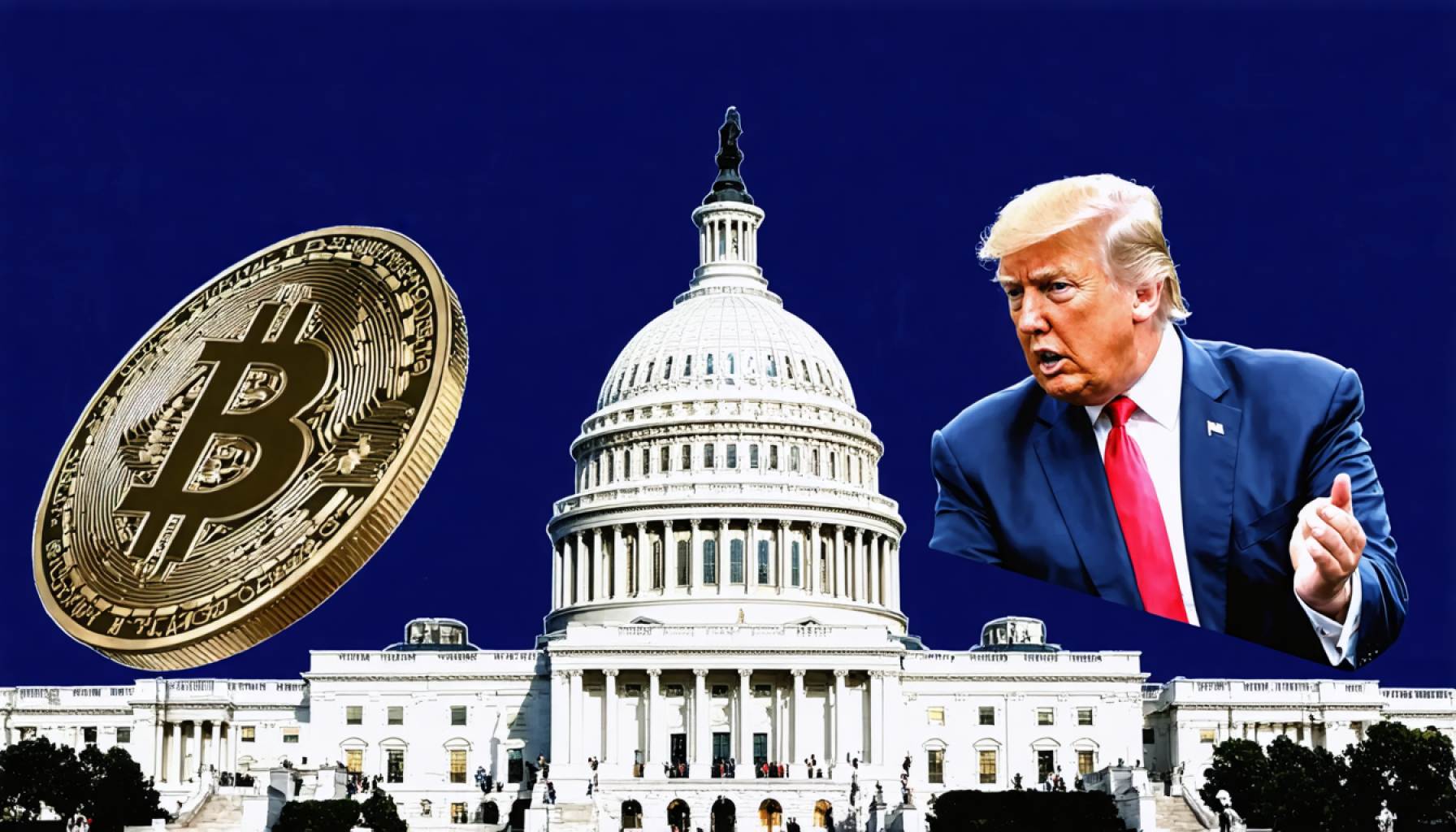- U.S. Congress is actively discussing stablecoin regulation in response to the introduction of USD1, a stablecoin backed by the Trump-endorsed WLFI.
- The USD1 stablecoin, pegged to the U.S. dollar, has stirred political concerns about financial stability and potential influence over blockchain technology.
- Stablecoins like USD1 may become powerful tools affecting geopolitical dynamics if not adequately regulated.
- Binance has halted USDT transactions for EU customers to comply with new MiCA regulations, indicating a trend toward stricter regulatory environments.
- The stablecoin market cap remains stable at approximately $238 billion, signaling both resilience and the anticipation of regulatory impacts.
- Emerging legislation will play a crucial role in determining the future of digital currencies and their integration into the global financial system.
Amidst the swirling vortex of digital finance, the U.S. Congress set its sights on a new frontier—stablecoin regulation. The bustling corridors of Capitol Hill buzzed with fervor as lawmakers dissected a groundbreaking crypto stablecoin bill. This pivotal moment unfolded in the shadows of a recent revelation: the launch of USD1, a stablecoin tied 1:1 to the U.S. dollar, championed by the Trump-backed Web3 Liberty Financial Initiative (WLFI).
Against the backdrop of cascading debates about financial sovereignty and digital innovation, the USD1 stablecoin’s emergence threw a bolt of excitement—and apprehension—into financial markets. Democrat lawmakers, wary of the tangled web of politics and finance, raised red flags over potential perils emanating from Trump’s foray into the crypto sphere. The specter of political influence infiltrating blockchain technology stared them in the face, conjuring uneasy whispers of financial instability and regulatory labyrinths.
The chatter within the House echoed the position that without robust federal oversight, stablecoins like USD1 might not just be economic disruptors but instruments of geopolitical chess. As the ink dries on this nascent bill, question marks hang in the air like Damoclean swords, ready to define the future landscape of crypto regulation.
Meanwhile, the seismic waves of regulatory activity rippled across the Atlantic. Binance, the crypto titan, pressed pause on Tether (USDT) transactions for European Union customers, keen to stay in line with new MiCA laws that swept in as the digital sentinel over European financial markets.
Yet, the stablecoin universe remained stoic. The total market cap, according to Coingecko, hovered around $238 billion. A mere 0.1% uptick signified both a steadfast commitment and potential for turbulence in markets conditioned by whispers of change, rather than thunderous declarations.
The drama unfolding in legislation chambers will undoubtedly steer the destiny of digital currencies. How lawmakers navigate the stormy seas of transparency, compliance, and crypto-political dynamics will shape whether stablecoins anchor safely or drift into the chaos of financial upheaval. As the intersection of politics and digital innovation looms, the shifting tectonics of crypto regulation beckon the curious to stay vigilant, for what emerges could redefine the financial frontier.
Unveiling the Future of Stablecoins: Key Insights and Implications
The Potential Future of Stablecoin Regulation: Understanding the Landscape
The legislative focus on stablecoins like USD1 represents a profound shift in how digital currencies are governed. As the U.S. Congress delves into regulatory frameworks, it becomes imperative to broaden our understanding of stablecoins’ role in the global economy. Here are several key aspects and insights that emerge:
How to Navigate the Stablecoin Regulation Maze
1. Understand Regulatory Classification: Recognize how stablecoins might be categorized—whether as securities, commodities, or a distinct category—and how this affects their usage and trading. Engage with resources from SEC.gov.
2. Compliance and Licensing: Companies dealing with stablecoins should aim to procure licenses where necessary and comply with Anti-Money Laundering (AML) and Know Your Customer (KYC) regulations to ensure legitimacy and legal operation.
3. Stay Updated on Legislative Changes: Continuous updates from authoritative sources related to cryptocurrency and legislative bodies can be invaluable in maintaining compliance.
Real-World Use Cases for Stablecoins
Stablecoins can serve a variety of purposes across different sectors:
– Cross-Border Payments: Offering a more stable alternative to volatile cryptocurrencies, stablecoins facilitate lower-cost international transactions.
– Hedging Against Volatility: Investors and traders use stablecoins to protect against the volatility of traditional cryptocurrencies like Bitcoin.
– DeFi (Decentralized Finance): Stablecoins form a crucial component of DeFi platforms by providing stability and liquidity for various financial services.
Market Trends and Predictions
– Growth Trajectory: With legislative support and clear regulations, stablecoins could see exponential growth, potentially doubling their market cap over the next decade as adoption in cross-border trade and DeFi expands.
– Impact of Regulation: Well-defined regulations might increase institutional confidence, leading to increased investment and diversification in stablecoin projects.
Security and Sustainability Concerns
– Technological Security: Stablecoins rely on blockchain technology to ensure transaction security; any vulnerability might threaten integrity. Prioritize employing enhanced cryptographic techniques.
– Environmental Impact: Consider green blockchain projects that minimize energy consumption, aligning with global sustainability goals.
Insights and Predictions
– Political Influence: Be aware of the potential for political influences on stablecoin regulation, which could affect currency stability and global economics.
– Regulatory Collaboration: Expect collaboration between countries and international bodies to create harmonized standards that streamline stablecoin regulation globally.
Actionable Recommendations for Readers
1. Stay Informed: Regularly check updates from reputable financial and legal publications to remain abreast of new regulations and compliance standards.
2. Diversify Strategy: Consider diversifying across different stablecoins and related assets, taking into account potential risks and rewards associated with each.
3. Engage with Financial Advisors: For individual and institutional investors, consulting with financial advisors could help navigate the complexities of investing in stablecoins.
By staying informed and adaptable, participants in the financial markets can harness the opportunity presented by stablecoins while mitigating associated risks. The ongoing developments in regulation and technology will continue to shape this emerging frontier, demanding vigilance and proactive engagement from all stakeholders.








